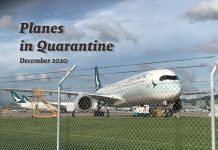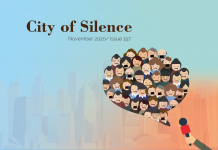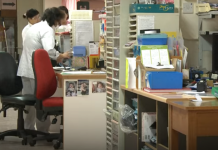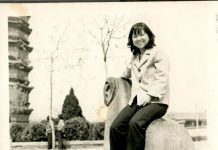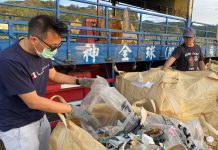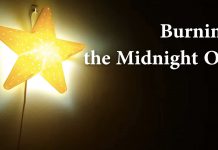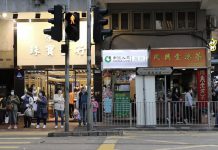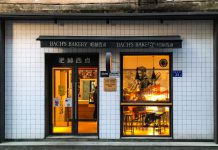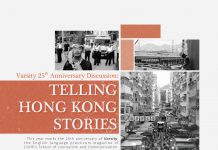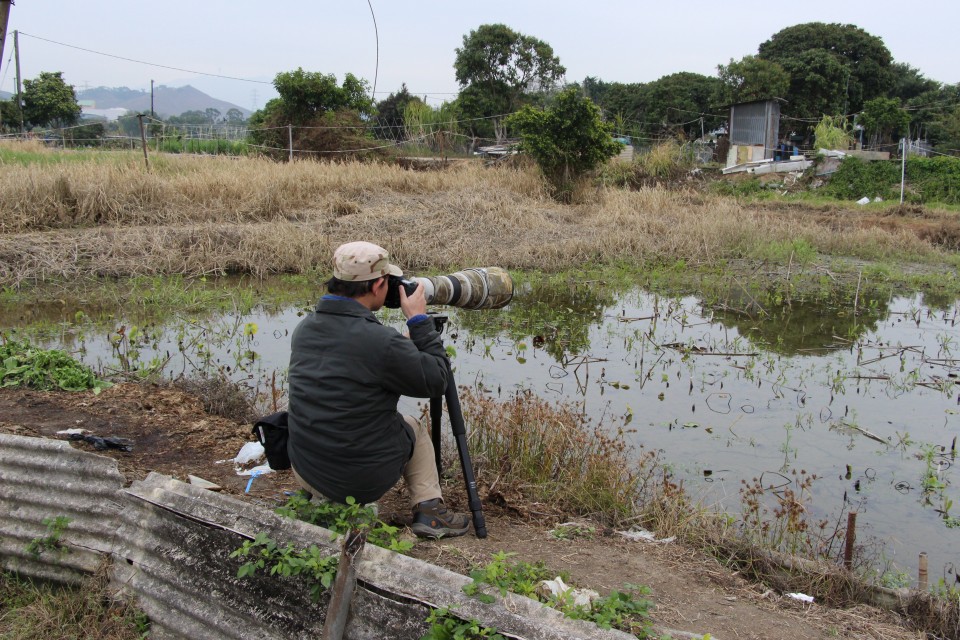Birdwatching reveals another side of Hong Kong
By Kanis Leung
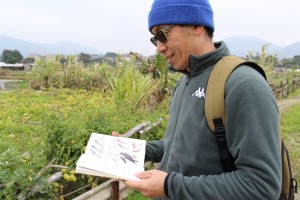
Just 15 minutes away from the Sheung Shui train station, the sounds of the city fade away; the crowds of commuters and parallel goods traders are out of sight. A mere two kilometres separates Long Valley from the densely-populated concrete jungle. But the distance is enough to transport the visitor to stretches of farmland as far as the eyes can see.
Out here, 48-year-old Chan Yung can escape the hassles of urban life and listen to the chirping birds. Until he discovered birdwatching 14 years ago, the school science lab technician only saw districts like Mongkok or Tsim Sha Tsui as the vibrant side of Hong Kong.
After taking up birdwatching, he has explored different rural and natural areas such as farmlands, forests and coastal areas. He has also learned to observe changes in the four seasons, not only from the features of birds, but also other natural details in his surroundings.
“People living in the city would not understand those in villages. They do not know there are villages in Hong Kong and people farming. They have never thought of this,” Chan says.
It took Chan a year to learn the required skills on his own, with the help of the bible of birdwatching, The Birds of Hong Kong and South China, which was first published in English in 1977 and in Chinese in 1992.
At a talk on birdwatching, Chan met some British birdwatchers who were looking for a fourth person to join their team for the World Wildlife Fund’s (WWF) Big Bird Race. The annual birdwatching competition requires participants to plan their own routes and record the birds they encounter. The team that identifies the most bird species through sight or sound wins the prize.
After joining his first race, Chan discovered that birdwatching had kept his teammates very fit, physically and mentally. They had sharp eyesight and hearing and were very knowledgeable about birds.
It could be because the British have a long tradition of birdwatching and are pioneers of birdwatching in Hong Kong. Colonial officials discovered the territory was a paradise for birds and set up the Hong Kong Bird Watching Society (HKBWS) in 1957.
Although Hong Kong is small in area, the territory boasts mountains, forests and wetlands, which provide habitats for different species to breed. At the same time, it is located in the middle of the East Asian-Australasian Flyway. Every year around 90,000 migratory birds, representing hundreds of species, will stop by.
Hong Kong’s wetlands, in particular, provide a rich environment for the birds. Yet, in the 1970s, it was proposed that the 116-hectare, Fairview Park residential development in Yuen Long be built on the Mai Po wetlands, an established habitat for hundreds of bird species.
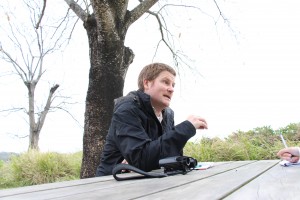
This sparked a huge protest from conservationists and birdwatchers. They asked the government to enact laws to restrict further development around the Mai Po Nature Reserve. In the end, the birdwatchers won and kept Mai Po untouched. The widespread media coverage of the issue raised public awareness and interest in birdwatching.
“Birdwatchers saved Mai Po. It was the very early successful conservation story in Hong Kong,” says Bena Smith, the conservation manager of Regional Wetland Projects for WWF Hong Kong.
Mai Po and Inner Deep Bay are now officially designated as a “Wetland of International Importance” under the Ramsar Convention, which promotes the conservation and wise use of these wetlands in the context of sustainable development.
The high level of protection of the reserve might give the impression that everything inside the preserved area is in a raw state of nature. But some areas have actually been “human modified”. Sometimes, says Smith, “nature needs a hand”. As an example, he cites an island across from the bird hide. Conservationists have planted bamboo plants and native trees on the island with the aim of turning it into a breeding site for birds.
Another successful human intervention is the introduction of buffalos, which are unwanted from other parts of New Territories. Although the buffalos do not belong to this habitat, their grazing keeps the grasses short, making the habitat comfortable for the birds to live in. Their daily routine saves the WWF money it would have had to spend on cutting the grass.
Compared to the United Kingdom and Nigeria, where he has previously worked, Smith says that on paper, conservation in Hong Kong is very good but “in practice, perhaps not so effective”.
Smith says the government does not have enough experts in its ranks. However, he sees the situation improving as more training is now provided in universities and the government is hiring more scientists.
Indeed, 10 years ago, there was insufficient and inadequate understanding and knowledge of birds. People reacted with panic when wild birds were sighted as they were seen as the source of avian flu. The discovery of a dead bird on Hong Kong island triggered the government’s mass cull of poultry in the New Territories.
This initially made things tough for birdwatchers, but in the following years scientists proved that the wild birds were unfairly blamed. The problem was with inappropriate practices in poultry farms.
As knowledge of birds has improved, so have conservation efforts and awareness. In 2015, the Convention on Biological Diversity — which is aimed at the conservation and sustainable use of biological diversity — will be extended to Hong Kong.
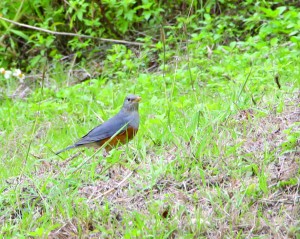
Smith expects it will mark a huge improvement for conservation efforts in Mai Po because some species which are not currently protected in Hong Kong will become so under this convention. He hopes it will give a foundation to arguments for conservation in the recent controversy about developing the country parks.
Smith says officials should think of the public side of conservation and the involvement of people and the community. For example, they need to balance the views of those who want 100 per cent protection from development with those of villagers who take opposing positions.
While Mai Po is a mostly wild reserve protected by an international convention, the Hong Kong Wetland Park in Tin Shui Wai serves as a recreational park with conservation and educational purposes. Its artificial habitats have been created to imitate nature and to educate. The park provides birdwatching equipment, tours, workshops and exhibitions for visitors. There are bird hides — wooden structures built some distance away from the wetlands —where visitors can learn to watch birds without disturbing them.
Plans are also afoot to create another birdwatching hotspot by transforming Long Valley into the Long Valley Nature Park (LVNP).
Jacqueline Cheuk Ching-ping from the Planning Department says the agricultural land north of Yin Kong and Tsung Pak Long and south of the confluence of the Sheung Yue River and Shek Sheung River are wetland areas of very high ecological value. This area of 37 hectares has been designated as LVNP to provide long-term conservation. However, details about habitat creation and management plans are not yet available.
Cheuk stresses the primary purpose of the LVNP is for conservation, though a visitor centre and education centre on wetlands and agriculture development are also proposed.
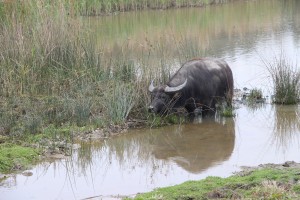
Lo Wai-yan, the general manager of the Hong Kong Bird Watching Society, is unsure about the impact LVNP will have on conservation because of the lack of details. But he is worried about how the proposed development of the Northeast New Territories will affect Long Valley in general.
The development of Kwu Tong which is only 1.9 km from Long Valley will bring an influx of people and cause great disturbance to the wildlife in the area, as well as light and noise pollution.
In general, Lo says Hong Kong is a place where birds are well protected in theory and the government follows international laws well. However, in practice, the picture is not always so rosy. Among the birdwatchers, the consensus is that the government lacks the required vision to plan and conserve birds and their natural habitats.
For example, says Lo, Hong Kong still allows the legal trade in birds. He says this encourages the illegal hunting of birds. In the process of hunting birds and transporting them to points of sale, many birds die. He wants the government to ban the trade.
Although the situation is better in Hong Kong than in the Mainland, where people will eat, shoot and even poison wild birds, there are also people here who harm birds without being aware there is anything wrong with their behaviour.
For instance, says Lo, there is a growing number of photographers taking pictures of birds. While most birdwatchers are satisfied when they can capture a picture of a bird, some photographers will go to extra lengths to get what they consider the best shot. They may stick worms on branches or feed them to lure them to stay in shot. Sometimes they play bird whistles on mobile phones to attract birds.
These practices put the birds at risk — feeding them may make them lose their skills at catching prey; the whistles may distract them from finding mates or the rest of their flock during migration. Besides, too much human interaction may cause the birds to lose their fear of people.
“[What happens to] a bird that isn’t afraid of humans? Well, it may be okay in Hong Kong, but in another place they’d be dead!” exclaims Lo. He says this shows the need for formal education on nature conservation in Hong Kong.
At the same time, Lo appreciates that birdwatching culture is becoming more inclusive and popular. There are elderly people getting involved and volunteering to provide birdwatching tour services to the public in Kowloon Park and Hong Kong Park. Among birdwatching circles, there are young people called tweeters who are keen to watch birds around coastal areas during typhoons, including those swept off course by storms from as far away as the Philippines.
To become a birdwatcher, all you need is a pair of binoculars, and these can range in price from a few hundred dollars to thousands. Once you look through your binoculars, says Lo, “your sight changes from wide view to microscopic… All of a sudden you recognise the tiny things which were there in the first place. You will find the world has become more lively and colourful.” And that, for Lo, is what birdwatching is all about.
Edited by Yoyo Chan



